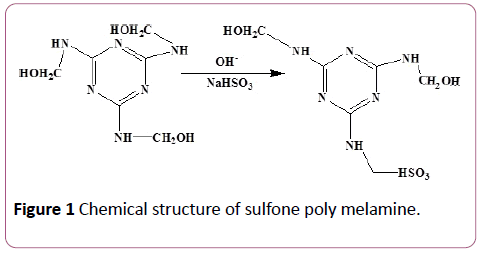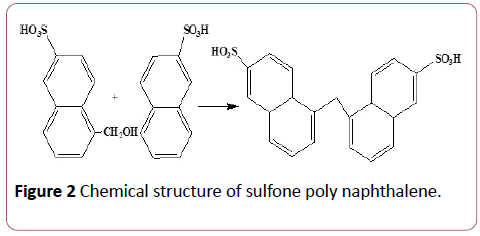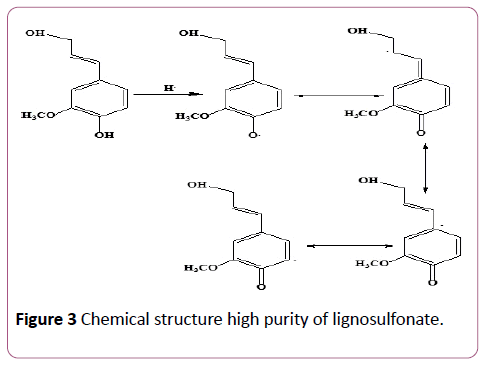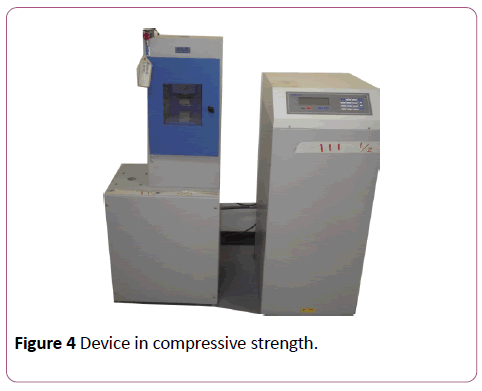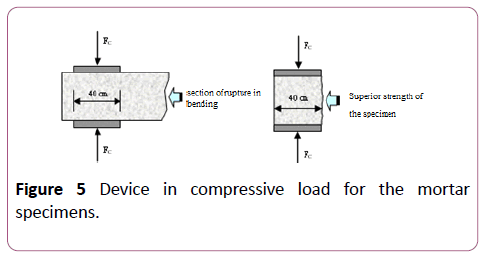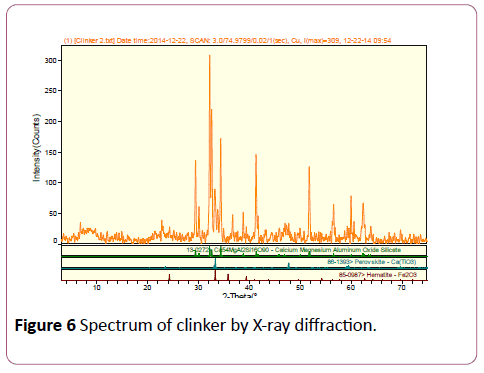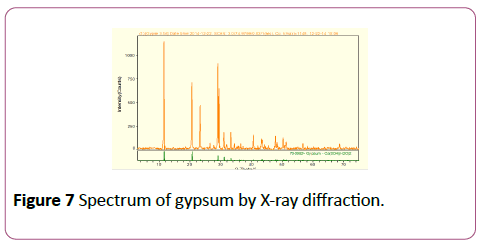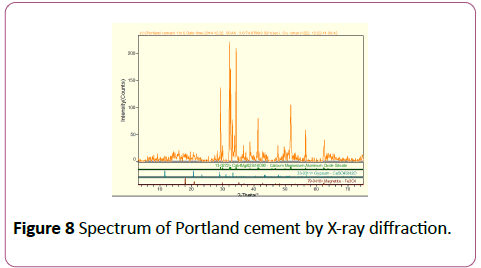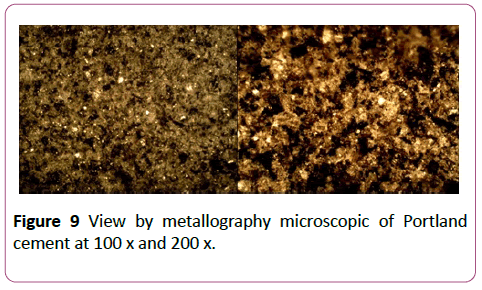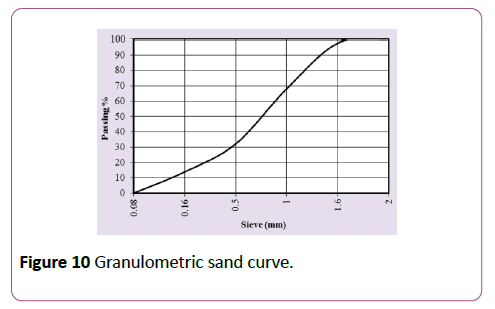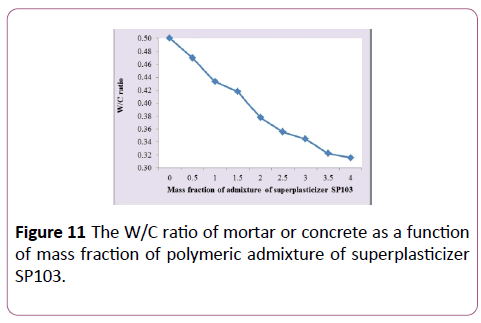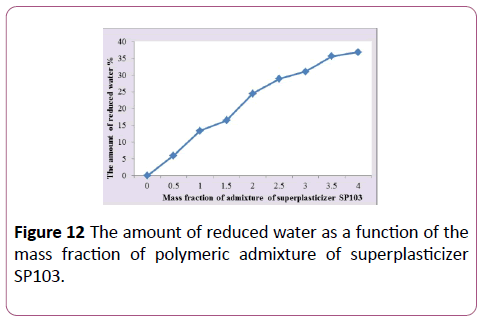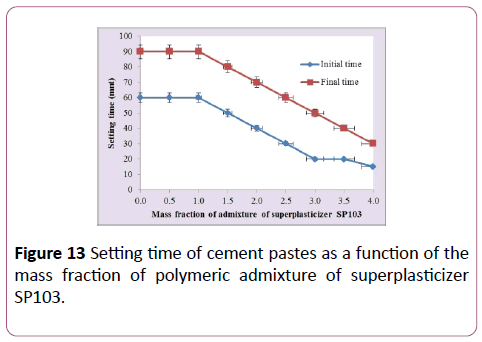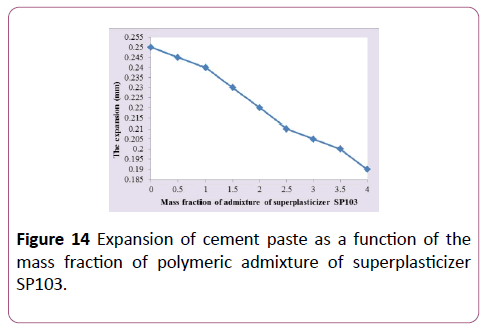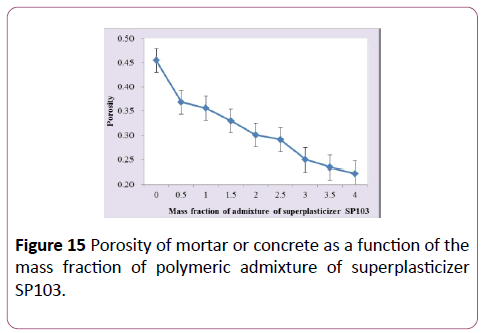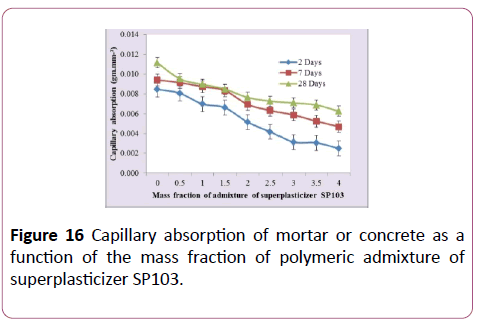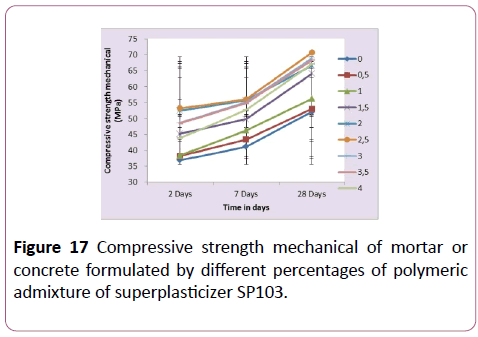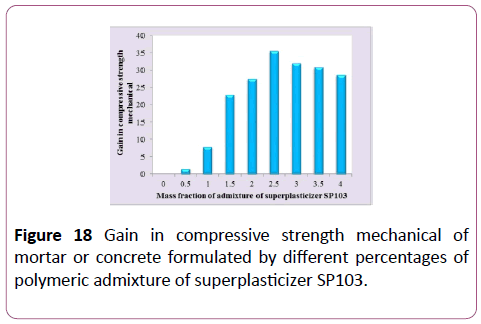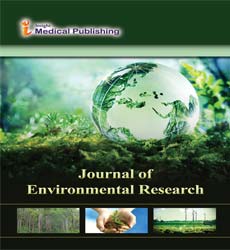The Effect of Polymeric Admixtures of Water Reduce of Superplasticizer and Setting Accelerator on Physical Properties and Mechanical Performance of Mortars and Concretes
Mohammed Hussein Khudhair1,2,3*, Ahmed Elharfi1 and Mohamed Salahdine El-Youbi3
1Faculty of Sciences, Laboratory of Agro Resources Polymers and Process engineering (LAPPE), Ibn Tofail University, Kenitra, Morocco
2Laboratory of Cement and Quality Control of Amran Cement Plant, Yemen
3Faculty of Science, Laboratory of Chemistry of Solid State, Ibn Tofail University, Kenitra, Morocco
- *Corresponding Author:
- Mohammed Hussein Khudhair
Faculty of Sciences
Laboratory of Agro Resources Polymers and Process engineering (LAPPE)
Ibn Tofail University
Kenitra
Morocco
Tel: + 212 633 431 912
E-mail: khudhair.mohammed65@gmail.com
Received date: December 19, 2017; Accepted date: December 26, 2017; Published date: December 30, 2017
Citation: Khudhair MH, Elharfi A, El-Youbi MS (2018) The Effect of Polymeric Admixtures of Water Reduce of Superplasticizer and Setting Accelerator on Physical Properties and Mechanical Performance of Mortars and Concretes. J Environ Res Vol.1: No.1: 4.
Abstract
The obtained results by various developed formulations have shown that the physical properties of the fresh cement paste formulated by this type of admixtures including the fluidity/the water content/the setting time has been improved on one hand, and the mechanical performance normally the porosity/the capillary absorption/the compressive strength, and durability of mortar or concrete in the hardened state has been improved on the other hand. Also, we have found that better physical and mechanical properties are between 0.5% SP103 and 2.5% SP103 of the polymeric admixture of superplasticizer by weight of cement. Beyond these percentages, the mechanical properties decrease considerably. This shows that the 2.5% of the polymeric admixture of superplasticizer SP103 is the saturation point.
Keywords
Polymeric admixture; Superplasticizers; Waterreducing; Setting accelerator; Durable concrete; Physical properties; Compressive strength
Introduction
Introduction The concrete is a composite material consisting of a mixture of hydraulic binder (cement), aggregates (gravel and sand), an amount of water required for hydration reactions represents about 25% of cement mass and another amount of (at least double) water is required in order to obtain satisfactory workability of fresh concrete during the placing operations, air and, if necessary, and admixture [1-5]. Because of its heterogeneity, it is essential to understand the role of each constituent in order to clarify its behavior [6-8]. The water/ cement ratio in a Portland cement paste is 0.5 according to the standard EN 196-1. However, the total porosity represents between 25 and 30% of total volume and the pore size varies from nanometer to a few millimeters [9,10]. This porosity will reduce the mechanical strength and durability of concrete. This last one is, therefore, a porous composite material [11], whose performance varies according to its capillary porosity and excess water required for the workability of fresh concrete. The installation of concrete requires much more water than the cement requires for its hydration [3,12], in the long-term. Thus, the excess of water evaporates, leaving voids in concrete, which makes it concrete brittle at hardened state [13,14]. Thinking of adding small quantities of polymeric admixtures to fresh concrete, we can significantly reduce the amount of water needed to achieve the desired workability. Moreover, the polymeric admixtures superplasticizer have become widely used in cement and concrete industry, etc., to prolong or accelerator the setting times [10,14], to reduce water requirements [6,8,15,16], and to improve the physical properties and mechanical performance of mortar or concrete in the fresh cement paste and hardened state.
Various types of polymeric admixtures or organic molecules can be used to obtain such results, according to the action of its mechanisms which essentially consist in neutralizing the many electrical charges attached to cement particles following its grinding operation [17-19]. Conferring to the norm EN 934-2, the polymeric admixtures of superplasticizers are synthesized polymers specifically for the concrete industry. They are based on sodium or sulfonated naphthaleneformaldehyde, sulfonated melamine formaldehyde, and high purity lignosulfonate [6,8,10,14]. These polymeric admixtures of superplasticizers are chemical structures incorporated during the mixing of concrete or mortar at a dose of less than or equal to 4% by weight of cement, in order to modify the properties of a mixture of fresh and hardened state. This will allow us to improve the fluidity of concrete by slightly dispersing the cement grains from one another, either by reducing the water demand or by keeping the dosage in water constantly. The goal of the polymeric admixtures of water reduce superplasticizer and setting accelerator SP103 is to modify the hydration time reaction of cement by accelerating the setting, reducing the W/C report and improving the mechanical performance [20-22]. The action mechanisms of this superplasticizer SP103 allows us to increase the hydration rate of mortars and concretes while modifying the W/C ratio and subsequently improving the mechanical performance, namely the porosity, the capillary absorption, and which finally influence on compressive strength [23-25]. Indeed, the dispersion power of superplasticizers SP103 which is explained by the adsorption at the interface of cement grains, in consequence creating the repulsive forces between the particles, reducing or eliminating squarely the adhesion between the neighboring molecules, which will be fixed by absorption to the surface of cement and which causes deflocculation of grains of the last [26-28]. When the organic molecules of polymeric admixtures SP103 are introduced into a suspension of a cementitious material, a large part of them is attached to the surface of cement particles (adsorption) [29]. These parameters reduce the attractive forces of interactions between particles, which exist between the atoms of different particles and their physical effect modifying the interparticle forces, which can intervene in the chemical processes of hydration and in particular of nucleation and crystal growth.
In this paper, different formulations of cement paste/mortar or concrete have been developed based on different percentages of polymeric admixtures of superplasticizer SP103 ranging from 0.5% to 4% with a step of 0.5% by weight of cement, while partially substituting the mixing water by this superplasticizer. The effect of the addition of superplasticizer SP103 on physical properties of fresh cement paste and on the mechanical performance of concrete has been studied in this paper.
Experimental
Materials
Cement: The type of cement used in this work is (CMI/42.5) from the plant of Amran in Yemen
Polymeric admixtures of water reduce of superplasticizer and setting accelerator SP103: The polymeric admixtures of superplasticizer SP103 are polymers in liquid form, prepared especially for the cement industry and concrete. They are based on sodium or sulfonated naphthalene-formaldehyde (Figure 1), sulfonated melamine formaldehyde, (Figure 2), and high purity lignosulfonate (Figure 3), [EN 934-2]. The SP103 admixtures used in the formulation matrix of mortars or concrete is delivered by the company CONMIX Ltd in Sharjah United Arab Emirates.
Water: The water used to mix the mortar or concrete is tap water.
Sand: To make our mortar, we used standard sand according to the norm EN 196-1, delivered by the new French company of Littoral.
Method
Method of preparation of fresh cement paste
Methods for determining the standardized consistency [NF EN 196-3 + A1]: The purpose of this test is to determine the optimum amount of mixing water for obtaining a good mortar. This test is carried out using the Vicat apparatus, according to the 196-3 standard. This is to make a paste of cement with 500 g of cement into the bowl of the mixer. The amount of water needed is chosen to take into account on the different percentages of polymeric admixtures of superplasticizer SP103 used in our formulations that show in Table 1. We immediately put the mixer at a slow speed for 90 Sec. Then we stopped the mixer for 15 sec to bring the paste which is located beyond the mixing zone. Subsequently, we restarted the mixer at slow speed for 90 sec. After we quickly introduced the paste into the frustoconical mold placed on a glass plate, without excessive compaction or vibration. Then the assembly is placed on the plate of the Vicat apparatus. Afterward, we measured the separation distance between the end of the probe and the base plate. This distance (d) is the consistency of the paste studied (W/C report).
| N° of test | Mass of cement (g) | Water (ml) | W/C | % SP103 |
|---|---|---|---|---|
| 1 | 500 | 130 | 0.26 | 0 |
| 2 | 500 | 125 | 0.25 | 0.5 |
| 3 | 500 | 118 | 0.24 | 1 |
| 4 | 500 | 110 | 0.22 | 1.5 |
| 5 | 500 | 100 | 0.2 | 2 |
| 6 | 500 | 97 | 0.19 | 2.5 |
| 7 | 500 | 95 | 0.19 | 3 |
| 8 | 500 | 93 | 0.19 | 3.5 |
| 9 | 500 | 90 | 0.18 | 4 |
Table 1: Formulation matrix of fresh cement paste with the polymeric.
Methods for determining the initial and final times [NF EN 196-3+A1]: The presence of a setting regulator in the hydraulic binders mass offers them, after mixing, a setting that starts after a few hours. It is, therefore, necessary to know the hydraulic binders setting time in order to determine the time available for the in situ implementation of mortars and concretes of which they are made. The setting time is determined by observing the penetration of a needle into a standard consistency cement paste until it reaches a specified value. This time is measured using the automatic Vicat apparatus. As soon as the anhydrous cement is mixed with water, the hydration status and the properties of paste thus obtained are evolving in time. As long as this hydration is not too advanced the paste remains more or less malleable or plastic, but after a while, the material becomes more and more difficult to work and its temperature increases. So we measure the depression of a needle of ∅1.13 mm, attached to the mobile part of the Vicat apparatus, whose total mass is 300 g, in a cement paste held in a frustoconical mold. When the needle stops at a distance d=4 mm (± 1 mm) from the flat base plate, it is said that there is initial of setting time; and when the needle with the annular accessory is no more than 0.5 mm from the top of frustoconical mold, the final of setting time has been reached [30].
Method for determining the cement expansion [EN 196-3+A1]: This test makes it possible to discover the presence of expansive materials in cement, in particular, gypsum and magnesia. These undesirable elements can lead to serious threats to the sustainability of constructions. It is measured using the apparatus of bath le Chatelier, according to standard EN196/3.
Methods of preparation of mortar or concrete in the hardened state
To achieve the objective of our study, we prepared reference mortar without and with polymeric admixtures superplasticizer SP103 which the compositions are inspired by the normal mortar defined by the EN 196-1 standard, with a quantity of water was adjusted and a paste with a consistency standard, as shown in Table 2. The procedures followed for the preparation of our mortars begin with mixing, the procedures followed for the preparation of our mortars begin with the mixer, and then we filled a mold (4 × 4 × 16) cm3.
| N° of test | Mass of cement (g) | Water (ml) | % SP103 | Sand (g) | W/C |
|---|---|---|---|---|---|
| 1 | 450 | 225 | 0 | 1350 | 0.5 |
| 2 | 450 | 211.5 | 0.5 | 1350 | 0.47 |
| 3 | 450 | 195 | 1 | 1350 | 0.43 |
| 4 | 450 | 188 | 1.5 | 1350 | 0.42 |
| 5 | 450 | 170 | 2 | 1350 | 0.38 |
| 6 | 450 | 160 | 2.5 | 1350 | 0.36 |
| 7 | 450 | 155 | 3 | 1350 | 0.34 |
| 8 | 450 | 145 | 3.5 | 1350 | 0.32 |
| 9 | 450 | 142 | 4 | 1350 | 0.32 |
Table 2: Formulation matrix of mortar and/or concrete with polymeric admixtures SP103 in hardened state.
The Tightening of the mortar in this mold is obtained by introducing the mortar twice and by applying to the mold 60 shocks each time using the shock device. After the mold is leveled, covered with a plate of glass and stored in the wet room. After 20 h or 24 h from the start of the mixing, the specimens are removed from the mold and stored in water at 20°C ± 1°C until the time of the test of rupture.
Methods for determining the porosity
The concrete is a porous material. This porosity plays an important role in the damage mechanisms of concrete, it is complex since it spreads on different scales and results from different phenomena. But the porous nature of concrete is very important since the resistance of the latter is related to its porosity. In general, it can be seen that more porous in concrete, the higher its permeability and the lower its compressive strength. This is the simplest method for measuring the porosity. It measures the amount of water that can circulate in the network of interconnected pores of the material. The procedure is that recommended by Ollivier [31]. It requires three weighing:
The mass of the saturated sample Msat when the sample is out of water;
The hydrostatic mass Mhyd corresponding to the mass of the sample in water;
The dry mass Msec of the sample after stabilization of its mass in an oven.
The weighing must be carried out on a sample which has not undergone a prior saturation/desaturation cycle, in order to avoid the influence of a removal of cement matrix following this preliminary cycle.
The apparent volume Vapp (in m3) of the sample is calculated from the saturated masses Msat (in kg) and hydrostatic masses Mhyd (in kg) thanks to the buoyancy of Archimedes according to the equation (1)
 (1)Where: ρ water is the density of water (1000 kg.m-3).
(1)Where: ρ water is the density of water (1000 kg.m-3).
Assuming then that the interconnected pores are saturated with water, the porosity ɳ is calculated of sample by equation (2)
 (2)Methods for determining the capillary absorption
(2)Methods for determining the capillary absorption
The water absorption test consists following by weighing the quantity of water absorbed by a previously dried specimen and allows the indirect characterization of capillary porosity. We followed a variant of the procedure proposed by the AFREM [32] after having optimized the preconditioning of specimens.
The tests concerned prismatic specimens (4 × 4 × 16) cm3 obtained by sawing these specimens. The pre-conditioning adopted consisted in pre-drying the specimens by steaming at 80°C until their mass stabilization (mass variation less than 0.01%/day), placing them in waterproof bags and then putting them back into oven for 10 days to promote the distribution of residual moisture and finally to let cool in a desiccator for at least 12 hours.
In order to prevent evaporation of water from the side surface, the specimens were covered with self-adhesive aluminum foil during the cooling phase. Then, the sawn face of specimens is placed on a wet sand of fluorescence was added to the water for visualizing at the end of the test. The front of capillary rise in the specimen after splitting perpendicular to the surface in contact with water.
The water mass absorbed was determined by successive weighing of the specimens at the deadlines of 0.15 mn, 30 mn, 1 h, 2 h, 4 h, 8 h, and 24 h. Before each weighing, the face of the test piece in contact with the sand bed is wiped with a damp cloth in order to remove the film of surface water retained at the underside of the test piece [30].
From the measurements, we can for each measurement time t, the capillary absorption coefficient by the equation (3)
 (3) Ac: Absorption coefficient at maturity (g. mm-2),
(3) Ac: Absorption coefficient at maturity (g. mm-2),
A: Section of the specimen (mm2),
M1: Mass at a time t (g),
M0: the Initial mass of specimen (g).
Methods for determining the compressive strength mechanical
The compressive strengths were evaluated at a young age (2 days) at middle age (7 days) and long-term (28 days) using a compression testing machine (Figure 4), to apply loads up to 150 KN, (Figure 5), provided with a compression device for the mortar molds. The value of the resistance considered is the average of the crushing stress of three test pieces (6 half of the test pieces) [30].
The compressive strengths are calculated using the equation (4), it is expressed in MPa.
 (4)Where:
(4)Where:
Rcm Compressive strengths, in MPa
Fc: Maximum load at break, in Newton
S: Surface of the auxiliary plates, in mm²
Gain of compressive strength at 28 days
We calculated the gain of compressive strength at 28 days using equation (5), it is expressed in percentage.
 (5)Where:
(5)Where:
Rmct: Control of compressive strength of mortar at 28 days;
Rmcx: Compressive strength of mortars with superplasticizer and X=0.5%, 1% ....... 4%.
Results and Discussion
Characterization of the materials used
For evaluating the influence of the polymeric admixtures of water reduce of superplasticizer and setting accelerator SP103 on physical properties of the fresh cement paste and mechanical performance of mortar or concrete in hardened state, we have preceded our work by the characterizing of materials used, to understand the phenomena which occur at the moment of mixing and hardening of concrete.
Cement
The chemical and mineralogical compositions of clinker, gypsum, and cement determined by the X-ray fluorescence (XRF) are presented in Tables 3 and 4.
| Chemical name | Chemical formula | Cement nomenclature | Clinker | Gypsum | Cement |
|---|---|---|---|---|---|
| Lime | CaO | C | 62.76 | 33.4 | 61.29 |
| Silica | SiO2 | S | 21 | 0.7 | 19.99 |
| Alumina | Al2O3 | A | 5.84 | 0.36 | 5.57 |
| Ferrite | Fe2O3 | F | 3 | 0.09 | 2.85 |
| Magnesia | MgO | M | 1.96 | 0.63 | 1.89 |
| Sulfur trioxide | SO3 | Ś | 0.9 | 47.2 | 3.22 |
| Potassium oxide | K2O | K | 1.21 | 0.03 | 1.15 |
| Sodium oxide | Na2O | N | 0.2 | 0.1 | 0.2 |
| Chlorine | Cl- | Cl | 0.02 | 0.01 | 0.02 |
Table 3: Elementary chemical compositions of clinker, gypsum, and cement in weight of atomic.
| Chemical name | Mineral name | Chemical formula | Cement nomenclature | Content |
|---|---|---|---|---|
| Tricalcium silicate | Alite | Ca3SiO5 | C3S | 47.7 |
| Dicalcium silicate | Balite | Ca2SiO4 | C2S | 25.1 |
| Tricalcium aluminate | Aluminate | Ca3Al2O6 | C3A | 10.4 |
| Tetracalcium Aluminoferrite | Ferrite | Ca4Al2Fe2O10 | C4AF | 9.1 |
Table 4: Mineralogical composition of clinker.
The result of physical and mechanical characteristics of cement is presented in Table 5.
| Designations | Values | Unity | |
|---|---|---|---|
| Absolute density | 3.14 | cm2.g-1 | |
| Refusal of the sieve 45 μm | 12.50 | % | |
| Refusal of the sieve 90 μm | 1.50 | % | |
| Specific surface Blaine | 3240.00 | g.cm-3 | |
| Normal consistency | 28.00 | % | |
| Setting time | Initial time | 60.00 | min |
| Final time | 90.00 | min | |
| Mechanical of compressive strength | 2 Days | 36.93 | MPa |
| 7 Days | 41.17 | MPa | |
| 28 Days | 52.14 | MPa | |
Table 5: Physical and mechanical properties of cement used.
The result of analysis by x-ray diffraction (XRD) of clinker, gypsum, and cement is offered in Figures 6-8.
The result of the analysis by metallography microscope of cement used gives an indication of the rearrangement of the particles, shown in Figure 9.
Polymeric admixtures of water reduce of superplasticizer and setting accelerator SP103
The physical properties of polymeric admixtures of water, reduce of superplasticizer SP103 are collected in Table 6.
| Name | Nature | Color | Density (g.cm-3) | Area training (%) | Chloride content |
|---|---|---|---|---|---|
| SP103 | Liquid | Brown | 1.20 | 0.50-1.00 | Nil |
Table 6: Physical properties of superplasticizers.
After the Table 6, we remarked that the admixture of SP103 is the liquid nature, brown color, 1.20 g.cm-3 of density, 0.5-1.0 (%) of area training, and the Nile of chloride content. They are incorporated during the mixing of the mortar and/or concrete in equal a dose raining from 0.5% to 4% by weight of cement with a step of 0.5%, to improve the physical and the mechanical properties of the fresh or hardened state.
Mixing water
The main characteristics of these waters are summarized in Table 7.
| Components | Unity | Values |
|---|---|---|
| pH | - | 7.00 |
| Turbidity | (mg/l) | 450.00 |
| CO3-2 | (mg/l) | 216.00 |
| HCO-3 | (mg/l) | 0.00 |
| Ca+2 | (mg/l) | 56.40 |
| Mg+2 | (mg/l) | 52.40 |
| Conductivity | µS/cm | 692.00 |
Table 7 Main features of the mixing water.
Sand
The particle size analysis of sand is illustrated in Figure 10.
The particle size analysis presented in Figure 10 shows that used sand grains are distributed in a systematic way according to the specifications of the standard EN 196-1.
Characterization of mortar and/or concrete formulated by polymeric admixture of superplasticizer SP103.
Influence of polymeric admixture of superplasticizer SP103 on physical properties of the fresh cement pastes.
Influence on water demand
The Figures 11 and 12 show the W/C ratio of mortar or concrete formulated by various percentages of the polymeric admixture of superplasticizer SP103 as a function of the mass fraction of this superplasticizer and also the quantity reduced of mixing water.
From the Figures 11 and 12, we have found that the introduction of the polymeric admixture of superplasticizer SP103 into the formulation matrix of mortar or concrete reduces the amount of water used as well as the W/C ratio. This reduction in the quantity of water is generally related to the action of dispersing exerted by the adsorption of molecules of the polymeric admixture of superplasticizer SP103 on the solid surface modifying the zeta potential of particles and promoting their dispersion due to a steric hindrance phenomenon.
Influence on setting time
Figure 13 presents the initial and final setting time of cement paste formulated by different percentages of the polymeric admixture of superplasticizer SP103 as a function of the mass fraction of this admixture.
At the presence results in Figure 13, we have found that the introduction of organic molecules of the polymeric admixture of superplasticizer SP103 into the formulation matrix of concrete decreases the initial and the final times. This decrease is explained by the fact that when the molecules of superplasticizer SP103 is introduced in suspension in cementitious material, a large part of them are attached to the cement surface particles (adsorption) reducing the attractive forces of van der Waals interparticle interactions and also create an entropic effect [16,33]. The hydrates released during hydration time form a kind of membrane that acts as a brake on diffusion process which in turn leads to the dormant period [34].
It seems likely that the chloride ion (from the setting accelerating agent), given its small size and high mobility, makes it easier to penetrate the pores of the formed membrane, thus on one hand to increase the hydration heat which acts as a retarder in hydration of silicate phase and as an accelerator in the aluminate phase. On the other hand, the chloride ion also makes it possible to accelerate setting and hardening [35].
Influence on expansion
Figure 14 displays the expansion of the cement paste formulated by different percentages of polymeric admixture superplasticizer of SP103 as a function of the mass fraction of this admixture.
Conferring to the Figure 14, we found that the expansion of cement paste formulated by different percentages of the polymeric admixture of superplasticizer SP103 decreases. This decrease is usually due to the action of polymeric admixture SP103 which disperses the cement grains and minimizes the interstitial void (capillary pores) between the cement particles and those of the aggregates (sand).
Influence of Polymeric Admixture SP103 on Mechanical Performance in Hardened State
Influence on porosity
Figure 15 explains the porosity of mortar or concrete formulated by different percentages of the polymeric admixture of superplasticizer SP103 as a function of the mass fraction of superplasticizer.
According to the Figure 15, we observed that the porosity decreases with increasing the polymeric admixture of superplasticizer SP103 in formulation matrix. This decrease is due logically to the fact that the molecule of admixture SP103 that disperses the cement grains from each other and fill the interstitial voids between the cement grains and that of sand.
Influence on capillary absorption
Figure 16 shows the capillary absorption of mortar or concrete formulated by different percentages of the polymeric admixture of superplasticizer SP103 as a function of the mass fraction of this admixture.
From Figure 16, we remarked that the capillary absorption of mortar is influenced by the porous structure and the level of the polymeric admixture of superplasticizer SP103. The latter can contribute to decrease of the capillary absorption by a formation of a polymer film and to reduce capillary pressure.
Influence on the compressive strength mechanical
The Figure 17 illustrations the compressive strength mechanical of mortar or concrete formulated by different percentages of the polymeric admixture superplasticizer of SP103 as a function of the mass fraction of this admixture.
From the presented results in Figure 17, we found that the compressive strength; at the young age (2 days), middle age (7 days) and long-term (28 days); increases with increasing the age in days and depending on the mass fraction of the polymeric admixture of superplasticizer SP103. This increase is explained by the effect that the addition of admixture SP103 reacts with the lime present in cement during the hydration by favoring, on one hand, the formation of hydrated calcium silicates and dispersing, on the other hand, the grain cement from each other while filling the voids between cement particles and that of aggregates.
Gain in Compressive Strength Mechanical
Figure 18 shows the gain in compressive strength mechanical of mortar or concrete formulated by different percentages of the polymeric admixture of superplasticizer SP103 as a function of the mass fraction of this superplasticizer.
At Figure 18, we noticed that the gain in strength mechanical increases with the increase of polymeric admixture of superplasticizer SP103 in formulation matrix. By way of example, the introduction of SP103 by 2.5% by weight of cement in the formulation matrix of mortar or concrete increases the compressive strength by 35.56% in long-term (28 days).
We have succeeded in improving the mechanical performance in particles the compressive strength of mortar or concrete and reducing the amount of mixing water used by incorporating the polymeric admixtures of water reduce of superplasticizer and setting accelerator SP103 into the formulation matrix at different percentages ranging from 0.5 to 4% by weight of cement with a pitch of 0.5%.
Conclusion
In this paper, we studied the effect of the partial substitution of the mixing water with polymeric admixtures of water reduce superplasticizer and setting accelerator SP103 at different percentages ranging from 0.5% to 4% by weight of the cement with a step of 0.5% on physical properties of cement paste in the fresh state and mechanical performance of mortar or concrete in the hardened state.
The obtained results by various elaborate formulations have shown us that the physical properties of the fresh cement paste formulated by this type of admixtures including the maneuverability/the fluidity/the setting time and the water content and mechanical performance normally; the porosity/the capillary absorption/the compressive strength, and durability of mortar or concrete in hardened state has been improved. We found that the dosage between 0.5% and 2.5% of polymeric admixture superplasticizer SP103 by weight of cement reduces the amount of water mixing by 37% compared with the control. In addition, the W/ C ratio decreased from 0.5 to 0.36. Otherwise, we have remarked that the initial and the final time decreases according to the percentage of polymeric admixture superplasticizer SP103. More, the expansion also decreases with the mass fraction of polymeric admixture superplasticizer SP103 decreases. Similarly, the incorporation of polymeric admixture superplasticizer SP103 in the formulation matrix decreases the porosity and the capillary absorption. On the other side, we observed that the compressive strength has been improved as a function of the increase of polymeric admixture superplasticizer SP103 in the cement matrix. This improvement represents a gain in mechanical of compression strength in long-term (28 days) by 35.56. Also, we have found that better physical and mechanical properties are between 0.5% and 2.5% by weight of cement. Beyond these percentages, the mechanical properties decrease considerably. This shows that the 2.5% percent of polymeric admixture superplasticizer SP103 is the saturation point. So this work is important to contribute the augment in the compressive strength that allows us to produce a new concrete durable and also to reduce the quantity of water used.
Acknowledgments
The authors are pleased to acknowledge all engineers and employees of the laboratory of cement and quality control of Amran cement plant of Yemen for providing the facilities for the research.
References
- Khudhair MHR, Elyoubi MS, Elharfi A (2017) Development of a new hydraulic binder (composite cement) based on a mixture of natural Pozzolan active'PN'and Pure Limestone'P. Lime': Study of the physical-chemical and mechanical properties. J Mater Environ Sci 8: 902-910.
- Khudhair MHR, Elyoubi MS, Elharfi A (2017) Comparative study of the influence of inorganic additions on the physical-chemical properties and mechanical performance of mortar and/or concrete. Moroc J Chem 5: 493-504.
- Khudhair MHR, Elharfi A (2016) Formulation of the cement kiln dust (CKD) in concrete: Studies of the physical-chemical and mechanical properties. Int J ChemTech Res 9: 695-704.
- El Youbi MS, Ahmed E (2017) Development and study of physical, chemical and mechanical properties of a new formulation of cement of a varying percentage of natural Pozzolan. J Chem Technol Metall 52: 873-884.
- Khudhair MHR, Elyoubi MS, Elharfi A (2017) Effect of partial substitution of clinker by pure limestone: Study of its influence on the physical-chemical properties and the mechanical performance. Moroc J Chem 5: 153-163.
- Khudhair MHR, Elyoubi MS, Elharfi A (2017) Formulation and characterization of a new ecological cementitious material at base of different percentage of limestone fillers: Study of physical-chemical and mechanical properties. J Mater Environ Sci 8: 3973-3985.
- Khudhair MHR, Elyoubi MS, Elharfi A (2017) Experimental study and modeling the rupture model of a new hydraulic binder based on the combination of inorganic additions by the response surface methodology J Mater Environ Sci 8: 1978-1989.
- Khudhair MHR, Elhilal B, Elyoubi MS, Elharfi A (2017) Development of a new cementations material eco-friendly of the environment: Study of physical and mechanical properties. J Mater Environ Sci 8: 2302-2310.
- De Schutter G, Apers J (2007) Le béton à hautes performances. Dossier Cement Febelcem 40: 1-12.
- Khudhair MHR, Elyoubi MS, Elharfi A (2018) Study of the influence of water reducing and setting retarder admixtures of polycarboxylate ‘superplasticizers’ on physical and mechanical properties of mortar and concrete. J Mater Environ Sci 9: 56-65.
- Mikanovic N, Jolicoeur C (2008) Influence of superplasticizers on the rheology and stability of limestone and cement pastes. Cem Concr Res 38: 907-919.
- Pontikes Y, Kriskova L, Cizer Ö, Jones PT, Blanpain B (2013) On a new hydraulic binder from stainless steel converter slag. Adv Cem Res 25: 21-31.
- Zhou J, Chen X, Ma J (2017) Synthesis of cationic fluorinated polyacrylate copolymer by RAFT emulsifier-free emulsion polymerization and its application as waterborne textile finishing agent. Dyes Pigments 139: 102-109.
- Khudhair MHR, Elyoubi MS, Elharfi A (2017) Study of the influence of a high water-reducing super plasticizer and accelerator of setting time on the physical properties and mechanical performance of mortars and concretes. Res J Pharm Biol Chem Sci 8: 1698-1712.
- Konsta-Gdoutos MS, Metaxa ZS, Shah SP (2010) Multi-scale mechanical and fracture characteristics and early-age strain capacity of high performance carbon nanotube/cement nanocomposites. Cem Concr Comp 32: 110-115.
- Cheung J, Jeknavorian A, Roberts L, Silva D (2011) Impact of admixtures on the hydration kinetics of Portland cement. Cem Concr Res 41: 1289-1309.
- Al-Shayea NA, Khan K, Abduljauwad SN (2012) Effects of confining pressure and temperature on mixed-mode (I-II) fracture toughness of a limestone rock. Int J Rock Mech Min. Sci 37: 629-643.
- Isaia GC, Gastaldini ALG, Moraes R (2003) Physical and pozzolanic action of mineral additions on the mechanical strength of high-performance concrete. Cem Concr Compos 25: 69-76.
- Fajardo G, Valdez P, Pacheco J (2009) Corrosion of steel rebar embedded in natural pozzolan based mortars exposed to chlorides. Constr Build Mater 23: 768-774.
- Senhadji Y, Escadeillas G, Mouli M, Khelafi H (2014) Influence of natural pozzolan, silica fume and limestone fine on strength, acid resistance and microstructure of mortar. Powder Technol 254: 314-323.
- Siad H, Mesbah HA, Kamali Bernard S (2010) Influence of natural pozzolan on the behavior of self-compacting concrete under sulphuric and hydrochloric acid attacks, comparative study. Arab J Sci Eng 35: 183-195.
- Camiletti J, Soliman AM, Nehdi ML (2013) Effects of nano-and micro-limestone addition on early-age properties of ultra-high-performance concrete. Mater Struct 46: 881-898.
- Esping O (2008) Effect of limestone filler BET (H 2 O)-area on the fresh and hardened properties of self-compacting concrete. Cem Concr Res 38: 938-944.
- Bărbuţă M, Harja M, Baran I (2009) Comparison of mechanical properties for polymer concrete with different types of filler. J Mater Civ Eng 22: 696-701.
- Irassar EF, Gonzalez M, Rahhal V (2000) Sulphate resistance of type V cements with limestone filler and natural pozzolana. Cem Concr Compos 22: 361-368.
- Uysal M, Yilmaz K, Ipek M (2012) The effect of mineral admixtures on mechanical properties, chloride ion permeability and impermeability of self-compacting concrete. Constr Build Mater 27: 263-270.
- Li H, Xiao H, Yuan J, Ou J (2004) Microstructure of cement mortar with nano-particles. Compos Part B Eng 35: 185-189.
- Menadi B, Kenai S, Khatib J, Aït-Mokhtar A (2009) Strength and durability of concrete incorporating crushed limestone sand. Constr Build Mater 23: 625-633.
- Darweesh HM (2004) Limestone as an accelerator and filler in limestone-substituted alumina cement. Ceram Int 30: 145-150.
- Khudhair M, Elharfi (2017) Development of new ecological and sustainable hydraulic binders based on different percentages of limestone fillers. Éditions Universitaires Européennes 1-81.
- Cyr M, Lawrence P, Ringot E (2005) Mineral admixtures in mortars: quantification of the physical effects of inert materials on short-term hydration. Cem Concr Res 35: 719-730.
- Ollivier JP, Torrenti JM (2008) La structure poreuse des betons et les proprietes de transfert,” Durabilité Bétons 1: 1-60.
- Mardani-Aghabaglou A, Son AE, Felekoglu B, Ramyar K (2017) Effect of cement fineness on properties of cementitious materials containing high range water reducing admixture. J Green Build 12: 142-167.
- Yaphary YL, Yu Z, Lam RH, Lau D (2017) Effect of triethanolamine on cement hydration toward initial setting time. Constr Build Mater 141: 94-103.
- Yan-Rong Z, Xiang-Ming K, Zi-Chen L, Zhen-Bao L, Qing Z, et al. (2016) Influence of triethanolamine on the hydration product of portlandite in cement paste and the mechanism. Cem Concr Res 87: 64-76.
Open Access Journals
- Aquaculture & Veterinary Science
- Chemistry & Chemical Sciences
- Clinical Sciences
- Engineering
- General Science
- Genetics & Molecular Biology
- Health Care & Nursing
- Immunology & Microbiology
- Materials Science
- Mathematics & Physics
- Medical Sciences
- Neurology & Psychiatry
- Oncology & Cancer Science
- Pharmaceutical Sciences
